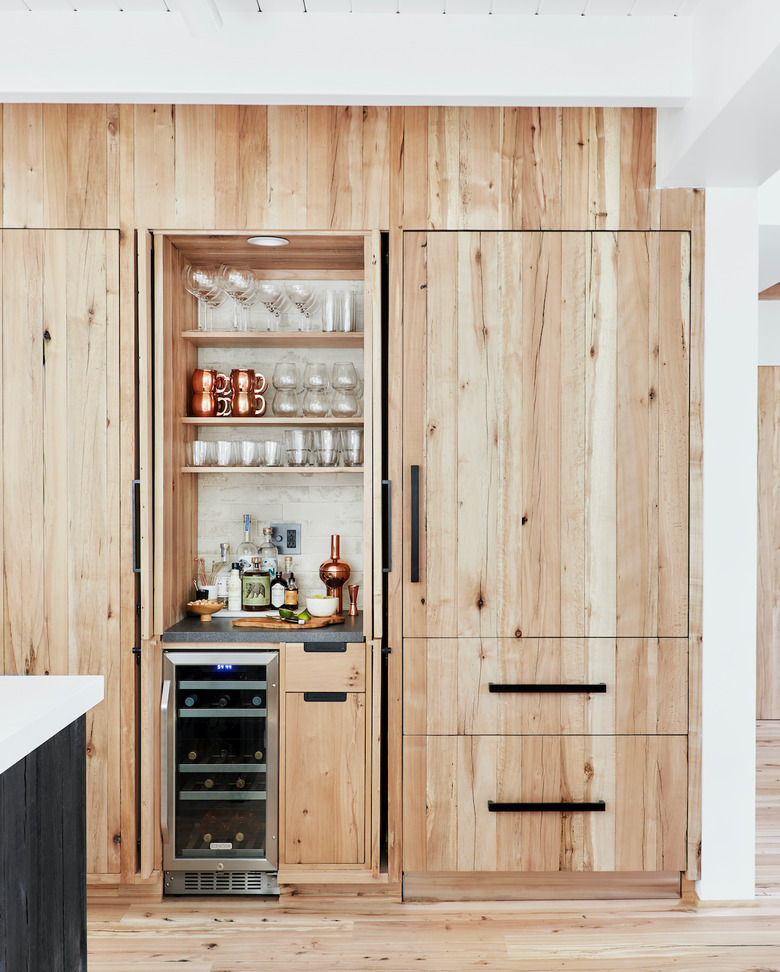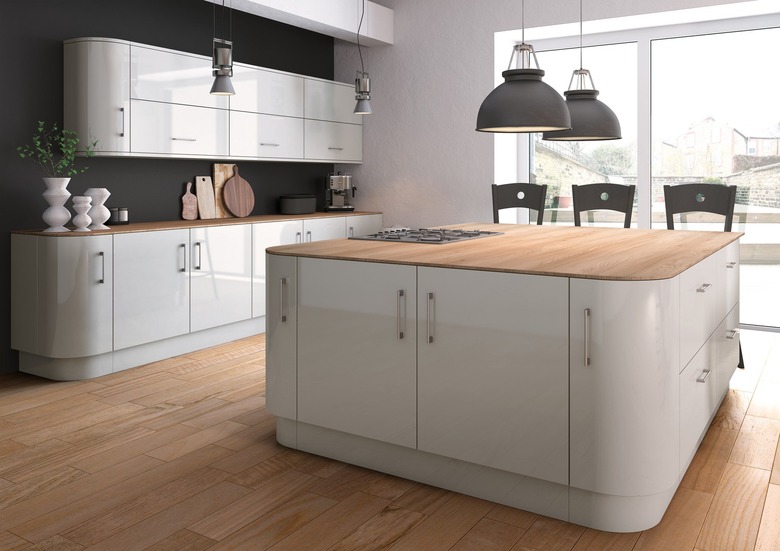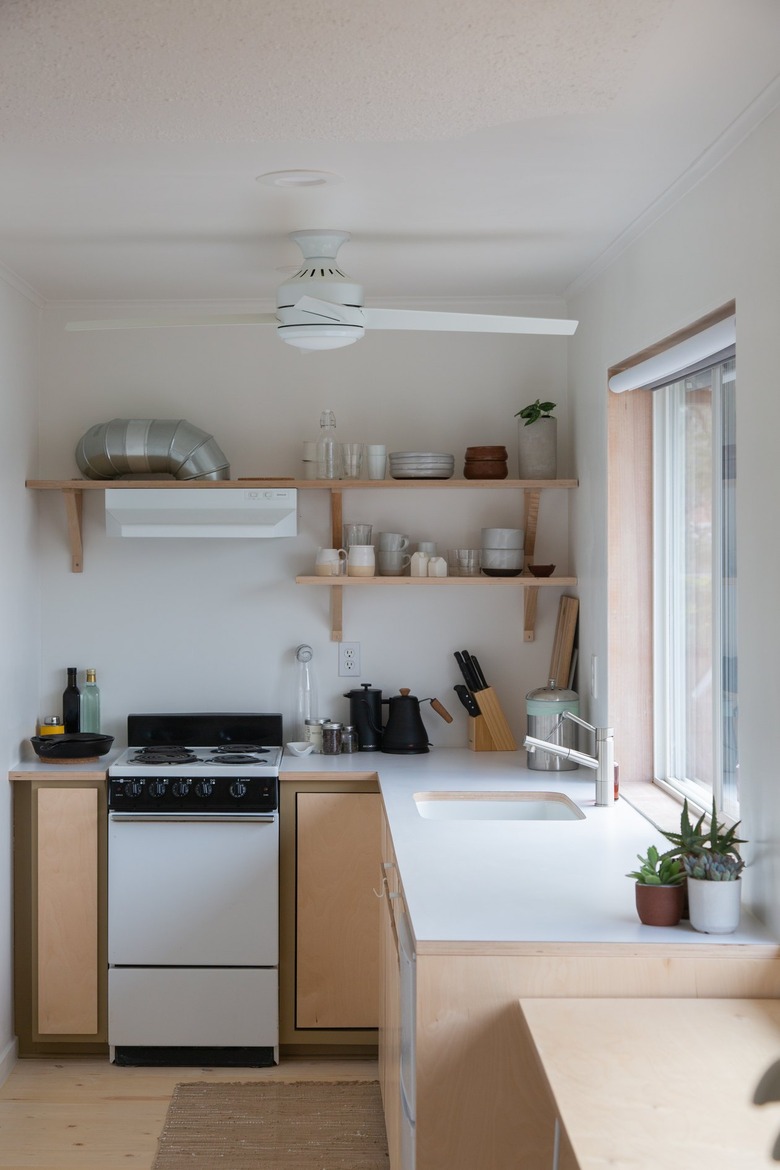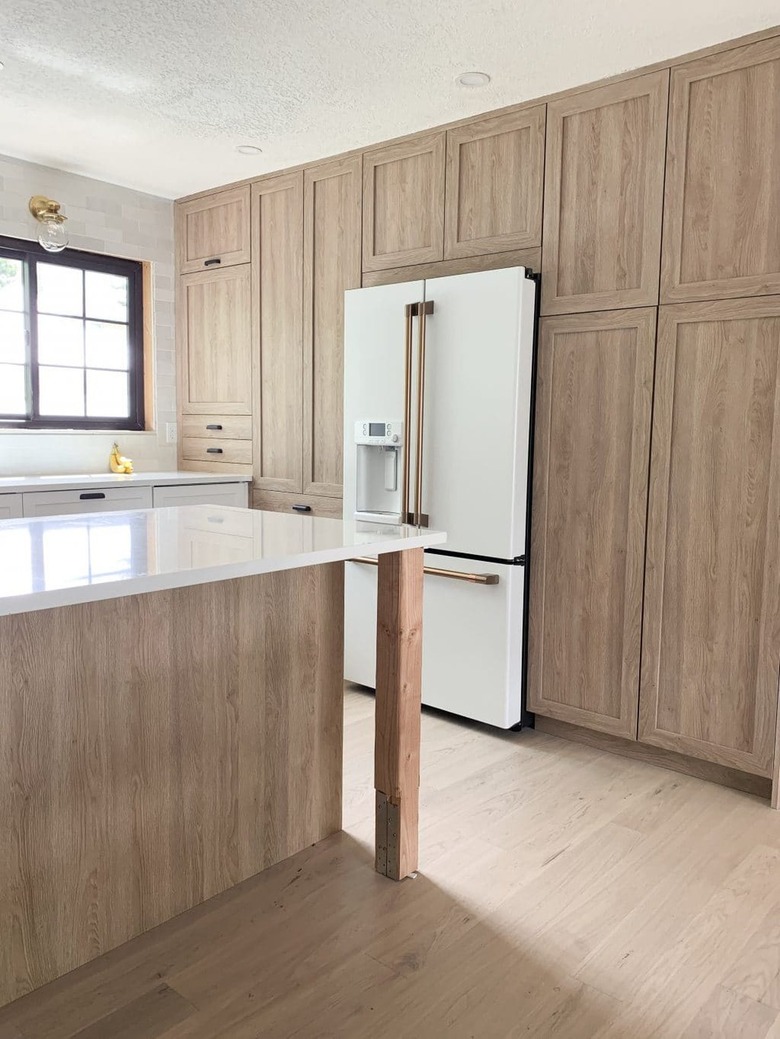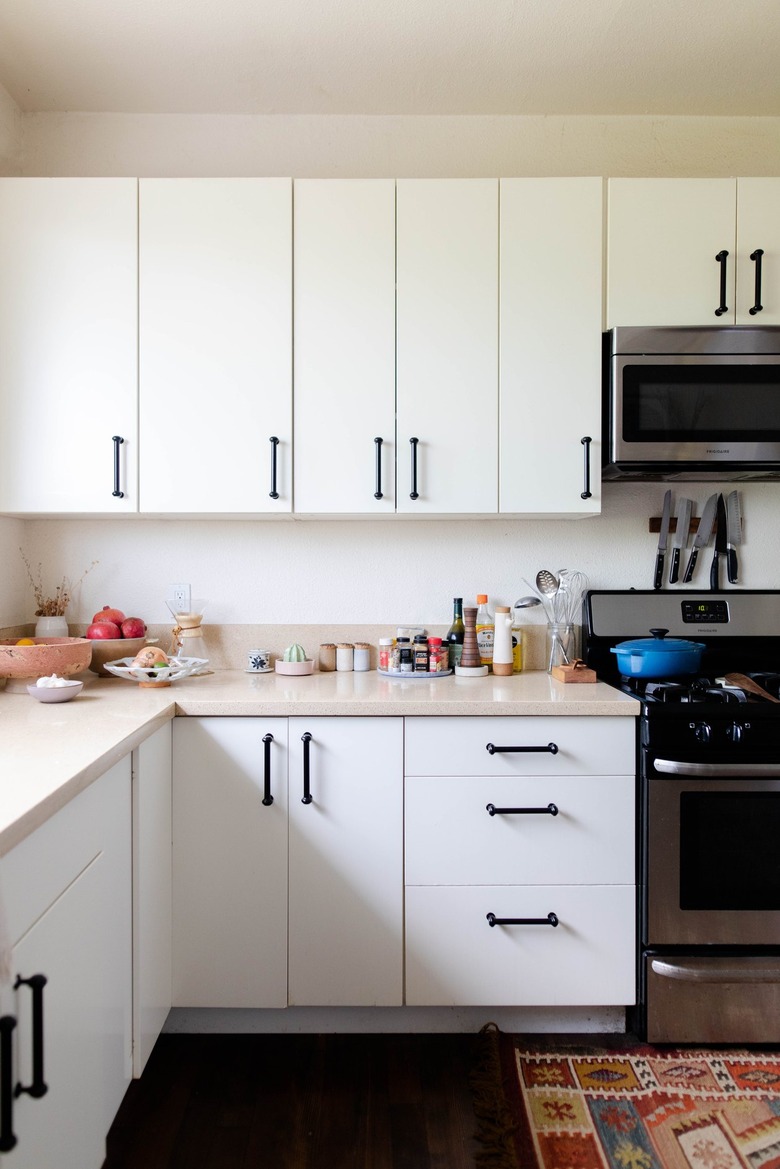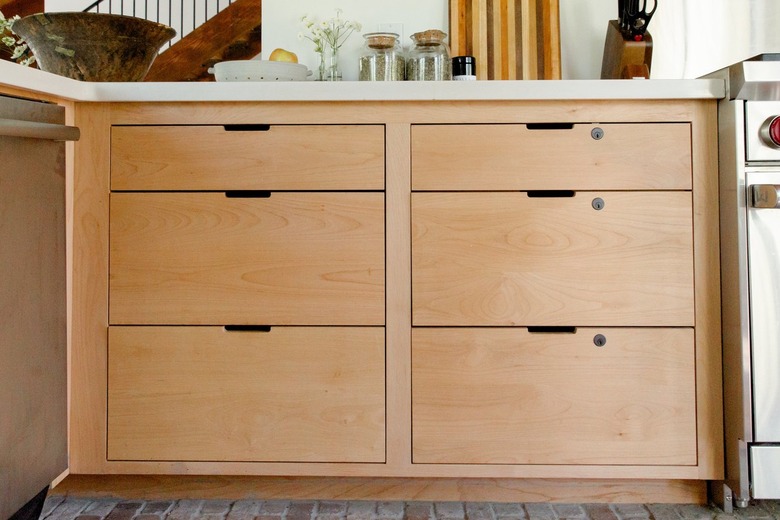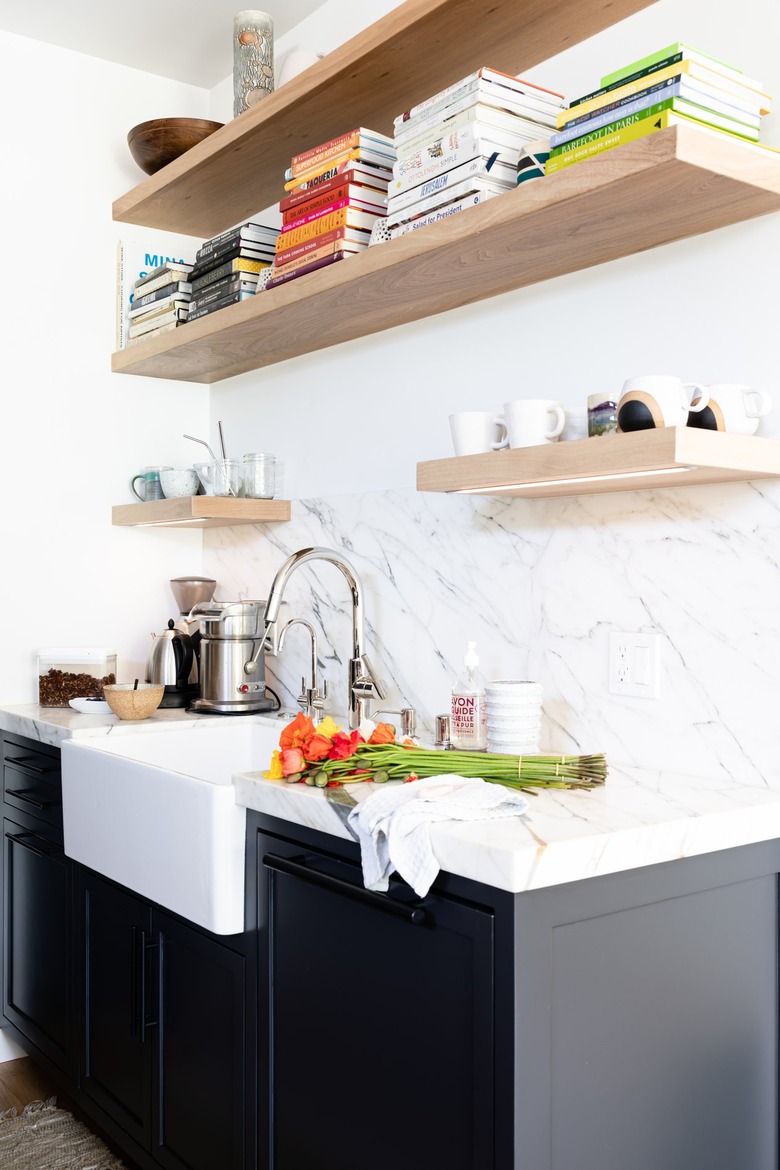Top 8 Kitchen Cabinet Materials To Check Out
Believe it or not, your kitchen cabinets are a lot more than a place to store your cereal and countless bags of sugar or flour. They are also a design moment waiting to happen — and they have the power to make or break the whole look of your culinary space.
When it comes to kitchen design, you might've put a lot of thought into selecting a custom cabinetry color or style, but what about finding the best material? Chances are you haven't even realized just how many there are. Each option — whether it's particle board, steel, or an engineered wood product — will offer a completely different look, and they all tend to have varying levels of maintenance.
To help streamline the entire process, check out these popular kitchen cabinet materials and learn how to care for them.
1. Choose stainless steel for a modern industrial remodel.
1. Choose stainless steel for a modern industrial remodel.
While stainless steel cabinets can give your kitchen a cool, industrial edge, they can get covered in smudges, oil splatters, and fingerprints. To keep your cabinets and drawer fronts looking as pristine as the set in this kitchen designed by Maple Craft USA, wipe down the doors with warm water and a microfiber towel. The inside of your metal cabinets might require a little extra elbow grease as well, so be sure to check out our tips for cleaning like a pro.
2. Bring in solid wood for a little rustic edge.
2. Bring in solid wood for a little rustic edge.
Incorporate a slice of the great outdoors in your kitchen with some rich, solid hardwood cabinets. As interior designer Emily Henderson proves in this high-end cook space, Mother Nature's number one material can bring a welcoming, rustic charm to any area. Show off your built-ins' natural beauty — and protect them from damage — by applying a matte polyurethane finish.
3. Try acrylic if you want quality cabinets, durability, and drama.
3. Try acrylic if you want quality cabinets, durability, and drama.
Typically semi-custom and made of fiberboard panels coated in a high-gloss finish, acrylic cabinets are known to pack a dramatic punch. But, as with any statement-making element, there's a fine line between being elegant and going overboard. If you want to strike a balance, take a cue from these cabinets by Just Click Kitchens, and opt for a muted color paired with light wood countertops.
Want to keep your acrylic cabinets looking their best? Stay away from harsh chemical cleaners — mild soap and water will get the job done.
4. Don't shy away from laminate.
4. Don't shy away from laminate.
Laminate is one of the most popular kitchen cabinet materials around — and for good reason. Most often made with paper and plastic resin and then bonded to a thin door front, this cabinetry option is cost-effective, durable, and easy to clean. Simply wipe it down, and you're good to go. Best of all, this material can come in plenty of different colors, making it easy to give your new kitchen the perfect pop of color.
5. If you like minimal upkeep, try thermofoil.
5. If you like minimal upkeep, try thermofoil.
Contrary to popular belief, laminate and thermofoil are two very different kitchen cabinet materials. While a laminate can refer to any substance that's used to cover another surface, thermofoil features a special type of PVC vinyl coating. Plus, it is usually only used on doors and cabinets.
Fortunately, caring for your thermofoil cabinets is simple. To keep them looking their absolute best — like these beauties that were designed by Chris Loves Julia for Semihandmade — clean with a damp cloth or sponge once a week.
6. Go for cost-effective melamine.
6. Go for cost-effective melamine.
Want to save on your kitchen cabinet materials? Give melamine cabinets a try. While melamine is technically considered a laminate, it's easier to create and is therefore cheaper. The downside is that lower-quality melamine usually doesn't last as long as other laminates, so it's important to pay extra attention to how you care for them. When it comes to tough grease or oil stains, wipe the cabinets off with a citrus solvent and cotton swab.
7. Give high-quality wood veneer a try.
7. Give high-quality wood veneer a try.
Want to enjoy the beautiful grain of modern wood cabinets but don't want to pay the steep price tag? Then wood veneer might be for you. This material features an incredibly thin layer of real wood, but to keep costs low, it's glued onto a more substantial base of cheaper core products. When it comes to veneer upkeep, getting rid of scuffs and dings is a breeze. Simply buff out the mark, and you're good to go. Just be wary of water damage. Too much moisture can cause the veneer to peel and bubble.
8. If you want an easy paint job, consider using medium density fiberboard.
8. If you want an easy paint job, consider using medium density fiberboard.
Made from recycled wood fibers and resin, medium density fiberboard (MDF) has an even grain and smooth finish that make it perfect for priming and painting. You can even repaint whenever the urge for a color change strikes your fancy. There are a few cons associated with MDF, though. Namely, it's not possible to sand out scuffs or chips; the material is incredibly heavy; and it can't withstand heat from pots and pans. However, it's still good for kitchen cabinets because it's less prone to warping and won't crack or peel.

